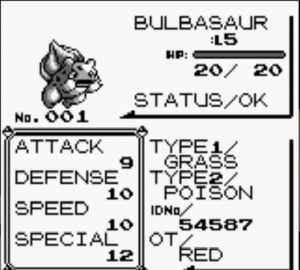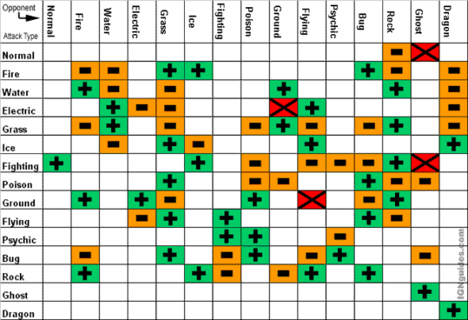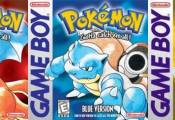Pokemon Red, Blue and Yellow Box Art. Image from Nintendo
By Stephen Infantolino
Staff Writer
To some, the number 151 has little meaning. However, for those who love Pokémon, it encapsulates that feeling of becoming a Pokémon master and catching them all.
It’s hard to believe that this simple game designed for kids has exploded into one of Nintendo’s biggest franchises.
On Feb. 27, Pokémon will be celebrating its 20th anniversary, one that Nintendo plans to celebrate by re-releasing the original Red, Blue and Yellow versions on the Nintendo 3DS Virtual Console Service.
Pokémon itself isn’t a hard game to understand. You start your adventure as a 10-year-old kid who receives his first Pokémon from Professor Oak, with the goal of collecting eight different gym badges, challenging and defeating the Elite Four and eventually going on to capture all 151 Pokémon to complete your Pokédex.
Red and Blue are practically the same game, the only difference between them is each version has a few exclusive Pokémon that you can’t obtain in the other. The only original Pokémon game that differs is Yellow version, also known as the Special Pikachu Edition.
In Pokémon Yellow, the game loosely follows the events of the Pokémon anime, while keeping the game-play elements of both Red and Blue.
Jessie and James of Team Rocket, the Pokémon-stealing antagonists of the anime, make a few exclusive appearances that aren’t in Red or Blue.
The game also forces the player to take Pikachu as their starting Pokémon, instead of picking from Bulbasaur, Charmander or Squirtle, as available in Red and Blue. The Pikachu the player receives in the Yellow version is also unique in its own regard. It follows its trainer on the world map, which no other Pokémon did at the time. In addition, it’s also impossible to evolve the Pikachu to its next stage, Raichu.
The only other major game-play difference Yellow version has is that the player can eventually receive Bulbasaur, Charmander and Squirtle through in-game events. There are other slight differences in Yellow, but those are the only significant ones.

Mechanics-wise, all three games operate the same way. Each Pokémon has five different stats: HP, Attack, Defense, Speed and Special.
These numbers help determine things like how fast and strong your Pokémon are. For example, a Pikachu with a speed stat of 17 is faster and its move will go first when fighting a Pokémon whose speed stat is below 17.
In these games, the Speed stat in particular also has some special attributes that aren’t in later installments. The higher the Pokémon’s speed stat is, the more likely its attack will land as a critical hit, dealing more damage to its opponent. This makes it easier than any other Pokémon game to land critical hits, making faster Pokémon like Jolteon a better choice.

Another major mechanic in the game is Pokémon types. There are 15 different types in Red, Blue and Yellow, and each Pokémon can have up to two different types.
However, each Pokémon is locked into a type, meaning Pikachu will only be an electric type, while Squirtle will only be a water type. The player can’t change these types at all.
The type also plays into how effective each move is against a certain Pokémon. For example, Pikachu, because it is an electric type, is weaker to ground type moves but can also deal more damage to water type Pokémon by using electric attacks.
Across the 15 types there are many differences in terms of the weaknesses and advantages Pokémon have over one another, which are compiled in the chart below.

“+” (green) means the attack is effective and deals twice the damage (ie: a Fire attack causes double damage when used on a Grass type)
“-” (orange) means it is not effective and will only deal half the damage (ie: a Bug attack is not effective against a Fire opponent)
“X” (red) means this attack can’t hit that particular opponent type (ie: Electric techniques can’t harm Ground Pokémon). Photo from IGN.com
Pokémon have levels, with a maximum of level 100. A Pokémon gains more experience from battles, and levels up when it has enough experience. Each level-up can increase each stat the Pokémon has, and for some Pokémon, hitting a certain level will cause them to evolve into a different Pokémon.
Pokémon evolution is simple. In Red, Blue and Yellow, most Pokémon evolve when they hit a certain level, are traded with another player or use evolutionary stones.
When a Pokémon evolves it is typically more powerful and can learn different moves. Pokémon evolution plays a huge role in completing your Pokédex as most Pokémon can evolve.
For Pokémon fans that joined with the most recent generation, which started with Pokémon X and Y, there are many things that are completely absent or different from these original games if you decide to go back and play them.
Besides the obvious missing Pokémon, you won’t find the Mega Evolutions that were introduced in X and Y. Mechanics-wise the Special stat in Red and Blue was later split into Special Attack and Special Defense, completely changing the balance of every Pokémon.
The Fairy, Dark and Steel types also aren’t present as the Fairy type was introduced in X and Y, and the Dark and Steel types were introduced in Gold and Silver.
Double, Triple, Rotation, Horde and Sky Battles also aren’t present. The only battles Red, Blue and Yellow offer are strict 1v1. Among other things, Pokémon Contests and the ability to breed Pokémon at the Day Care are missing from these games.
Naming all the little nuts and bolts that are missing would take too long as a lot has changed over the past 20 years.
Another big attribute of Pokémon Red, Blue and Yellow is that from a programming standpoint they are very buggy.
In the Yellow version alone there are exploits that allow the player to beat the game with an in-game time of 0 minutes. There are glitches in Red and Blue for getting max level Pokémon at the start of the game without even doing any real work. You can also skip entire chunks of the game and exploit a hiccup to make a glitched Pokémon named Missingno appear.
Like the things that have changed over the past 20 years, there are way too many glitches to mention. The video below goes more in-depth about them.
All of this begs the question: Do Pokémon Red, Blue and Yellow hold up 20 years later?
Without a single doubt in my mind the answer is a resounding ‘yes.’ Even though a lot of later installments added a lot of great content, Red, Blue and Yellow still have a lot of content to offer, and it will take countless hours to complete the Pokédex and your journey.
The graphics still sort of hold up. They aren’t as good as they were back when the game was new, but they are still appealing to look at.
Every time I pick up my Gameboy and play these games, a sense of nostalgia washes over me, and I want to be that little kid again, battling my way through the Elite Four and capturing all 151 Pokémon.
Fans new and old should play these games, and with the games’ 20th anniversary coming up, now is a perfect time to do so. Nintendo will be selling all three games for the price of $9.99 each, come the Feb. 27, which is a much better alternative then pulling out that dusty Gameboy, or trying to find a used cartridge on eBay. I know that I will be choosing to play them on the 27th, will you?


